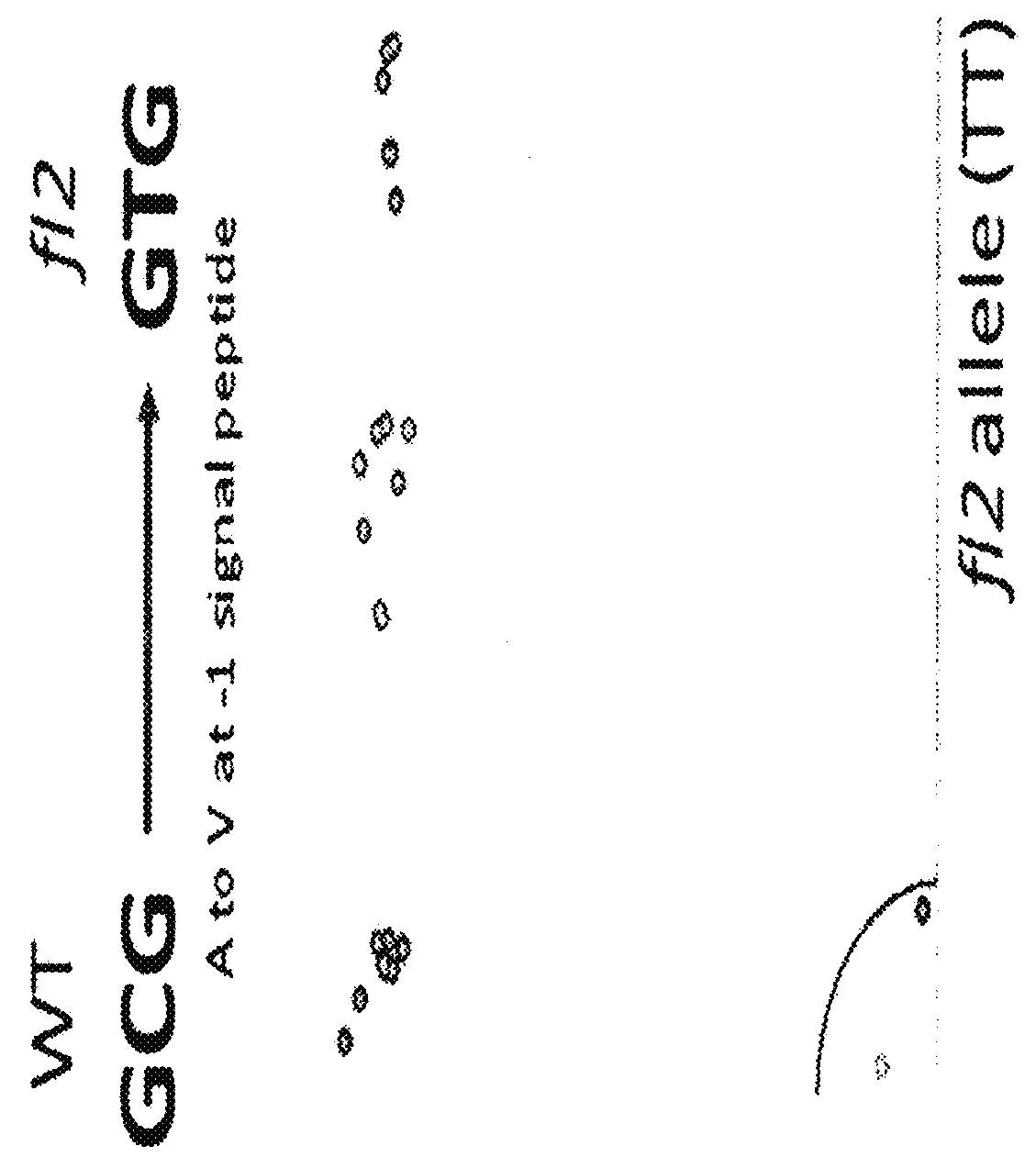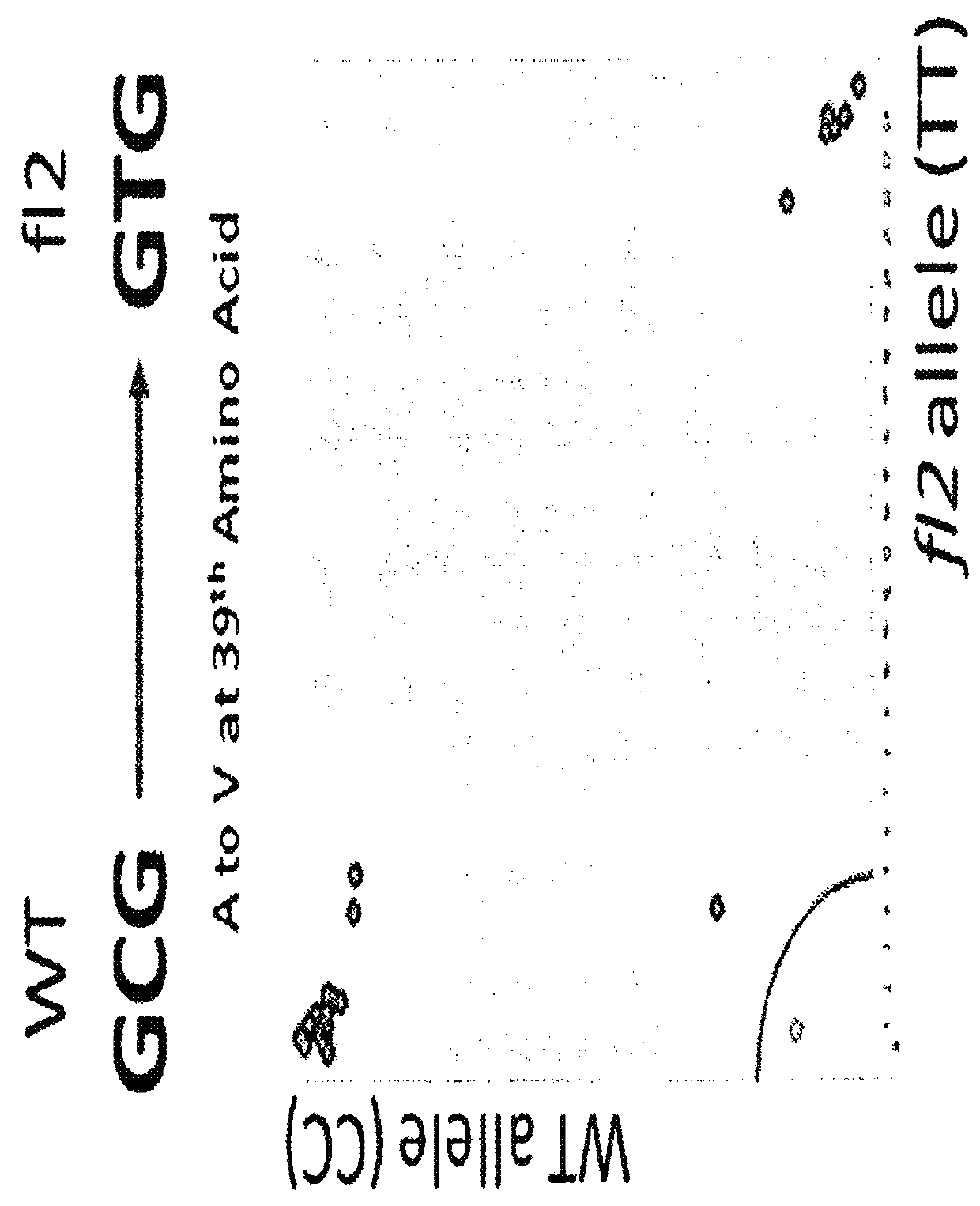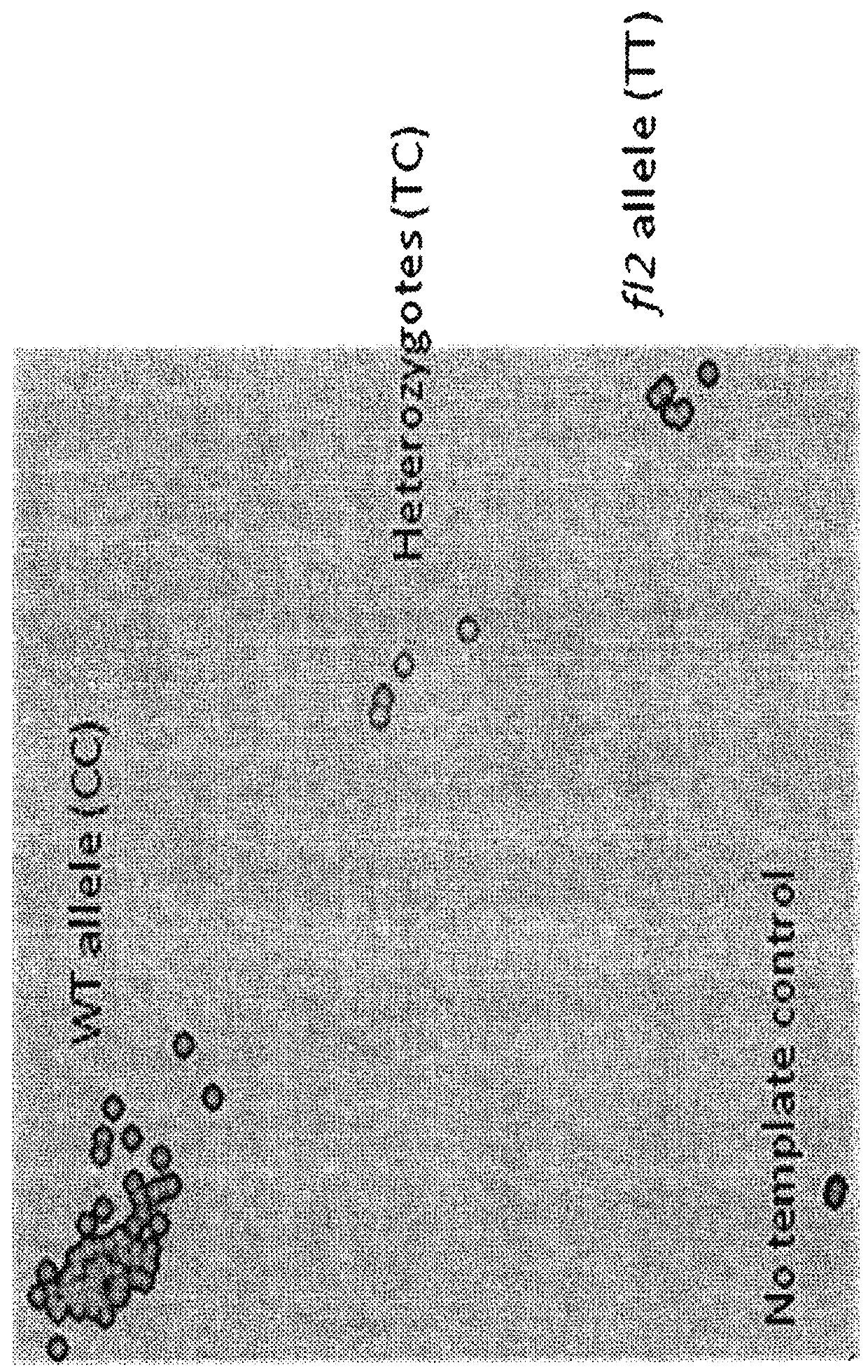Floury 2 gene-specific assay in maize for floury (fl2) trait introgression
a technology of floury and gene-specific assays, which is applied in the field of plant breeding, can solve the problems of difficult phenotyping based on kernel vitreousness, time-consuming introgression of fl2 mutation into corn lines, and high stringency conditions, and achieves a high stringency and reliability. and predictability
- Summary
- Abstract
- Description
- Claims
- Application Information
AI Technical Summary
Benefits of technology
Problems solved by technology
Method used
Image
Examples
example 1
Cloning of the 22 kDa α-Zein Gene from DAS Germplasms
[0112]Select maize plant lines J15 and Oh-43 were requested from the maize genetic stock center and propagated by DAS plant breeders. Corn plants were derived from the J15 line and are homozygous for the floury2 trait. Likewise, additional corn plants were derived from the Oh-43 line and contain the floury2 trait. In addition, another group of corn plants lacking the floury phenotype (wild type) were used to develop the assay.
[0113]DNA Isolation
[0114]For DNA extraction, embryos dissected from seeds or fresh leaf punches were ground to a fine powder using a Genogrinder 2000™ and extracted with a standard MagAttract 96 DNA Plant Core Kit™ (Qiagen, Valencia, Calif.) using the customized BioCel Robot System™ from Agilent Technologies (Santa Clara, Calif.). Prior to PCR, DNA samples were quantified with the Quant-iT™ PicoGreen® Quantification Kit (Invitrogen, Carlsbad, Calif.) using the manufacturer's instructions.
[0115]PCR amplificati...
example 2
Gene-Specific Molecular Assay for Fl2
[0123]The alanine to valine substitution at the −1 position of the signal peptide is sufficient in creating the 24 kDa unprocessed α-zein and the floury2 phenotype. To develop gene-specific molecular assays for fl2, a KASPar® assay was designed based on this single nucleotide polymorphism from C to T. It was tested with a diverse panel of 23 maize inbred lines, including six lines of floury2 samples. The assay was effective at distinguishing the floury2 lines from the rest of the inbreds based on copy number variations of the mutant allele, which contains the SNP basepair C. However, wild type alleles with basepair T amplified from all samples with equal intensity, indicating the assay cannot be used for gene-specific detection (FIG. 3). This appeared to be mainly due to the high homology of 22-kDa α-zein with other zein family members. The α-zein family contains 75 members with more than 75% amino acid identity.
[0124]Four additional substitution...
example 3
Assay Validation with Segregating Populations
[0127]Validation with segregating populations
[0128]The fl2_zygo gene-specific assay was validated using segregating samples from two genetic backgrounds. Each pool contained 25 samples. Ten seeds from each sample were dissected and DNA was extracted from embryos, with a total of 500 seeds (50 ears with 10 seeds per ear), and tested with fl2_zygo (FIG. 6). Samples with discrepancies were further evaluated with field experiments: ten seeds from each sample were planted in Arlington, Ill. Fresh leaf punches were harvested for DNA extraction and genotype testing. Plants were then self pollinated and the ears harvested. Phenotype data was collected by placing the kernels on a light box and scored based on a vitreouseness scale: translucent-wildtype; partial opaque-heterozygotes and complete opaque-homozygotes.
[0129]The assay clearly distinguished among the homozygous, heterozygous and wild type genotypes. For homozygous floury2 as well as wild...
PUM
| Property | Measurement | Unit |
|---|---|---|
| emission wavelength | aaaaa | aaaaa |
| emission wavelength | aaaaa | aaaaa |
| excitation wavelength | aaaaa | aaaaa |
Abstract
Description
Claims
Application Information
 Login to View More
Login to View More - R&D
- Intellectual Property
- Life Sciences
- Materials
- Tech Scout
- Unparalleled Data Quality
- Higher Quality Content
- 60% Fewer Hallucinations
Browse by: Latest US Patents, China's latest patents, Technical Efficacy Thesaurus, Application Domain, Technology Topic, Popular Technical Reports.
© 2025 PatSnap. All rights reserved.Legal|Privacy policy|Modern Slavery Act Transparency Statement|Sitemap|About US| Contact US: help@patsnap.com



